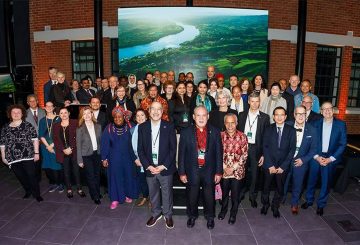Covid-19 tiếp tục ảnh hưởng đến số lượng sinh viên quốc tế tại các cơ sở đại học của miền Nam.
Vào năm 2019, trước đại dịch Covid, khoảng 3000 sinh viên quốc tế đã tham dự Đại học Otago, giám đốc văn phòng quốc tế của nó, Jason Cushen, cho biết.
Kể từ năm 2020, thông qua việc phân bổ của Chính phủ, 148 sinh viên đã được phép trở lại trường đại học.
Đến nay, 91 học sinh này đã trở về New Zealand và 57 học sinh vẫn còn ở nước ngoài nhưng dự kiến sẽ sớm trở lại, thầy Cushen cho biết.
Viện Công nghệ Nam Giám đốc quốc tế Chami Abeysinghe cho biết họ cũng đang trải qua sự suy giảm mạnh mẽ của sinh viên quốc tế.
“Chúng tôi hy vọng sẽ có khoảng 300 sinh viên quốc tế vào năm 2022, nhưng hầu hết trong số này là những sinh viên trở lại đang hoàn thành chương trình của họ,” cô nói.
Sinh viên quốc tế chỉ được phép đến New Zealand nếu họ được miễn trừ chính phủ.
Năm nay, Chính phủ đã cho phép tiếp cận 1000 sinh viên nước ngoài để học tập tại New Zealand, 300 trong số đó là sinh viên đại học.
Bộ Giáo dục cho biết các học sinh còn lại là cấp bậc phụ (300) và thực tập thí điểm (400).
Sinh viên quốc tế phải nộp đơn xin thị thực sinh viên và ở trong cơ sở MIQ trước khi đến trường để bắt đầu hoặc tiếp tục khóa học của họ.
Đại học Otago không còn khả năng xử lý đơn xin thị thực sinh viên sau khi Di trú New Zealand ngừng chương trình trực tiếp của nhà cung cấp vào cuối năm ngoái.
Đại học Otago đã đưa ra các quy định cho một loạt các chương trình được cung cấp trực tuyến cho những sinh viên muốn bắt đầu hoặc tiếp tục học tập ở nước ngoài, ông Cushen nói.
Sinh viên du học ở nước ngoài đều đủ điều kiện nhận học bổng tương tự và phải chịu cùng học phí như sinh viên trong khuôn viên trường.
Chủ tịch Hiệp hội Sinh viên Đại học Otago Melissa Lama cho biết cô đã thất vọng trước sự đồng ý của sinh viên quốc tế, nhưng hiểu cách tiếp cận mà Chính phủ đã thực hiện để hạn chế số lượng sinh viên quốc tế.
“Chúng tôi rất buồn,” cô nói.
“OUSA và sinh viên đại học đánh giá cao sự đóng góp của sinh viên quốc tế thông qua sự sống động văn hóa độc đáo của họ.”
Cô Lama cho biết cô hy vọng sinh viên quốc tế sẽ sớm được chào đón trở lại.
“Những người trong chúng tôi trong khuôn viên trường rất may mắn được ở đây,” cô nói.
Năm 2019, New Zealand đã có hơn 22.000 sinh viên quốc tế toàn thời gian trả tổng học phí là 562.3 triệu USD.
Các số liệu cho năm 2021 và 2022 ước tính là 70% con số năm 2019, một phát ngôn viên của Bộ cho biết.






























































